Discover the Green Heart of Tanzania: Your Guide to the Usambara Mountains
The Usambara Mountains, found in the northeastern part of Tanzania, are a lesser-known tourist destination compared to famous parks like Serengeti or Kilimanjaro. The Usambaras are known because they are home to lush forests, a variety of wildlife and charming villages and present an ideal way out of the city. It is split into the East Usambara and West Usambara range each possessing its own distinctive landscapes, hiking trails, and sceneries that would entice both the nature lovers and adventurers.
The Usambaras are a place where everyone can find something to do either through trekking in their clean rainforests, local markets or a good view of the rolling green hills. This Usambara Mountains travel guide will provide you with necessary tips, attractions sites, and useful practical travel tips to enable you maximize your visit to this beautiful Tanzanian mountain range.
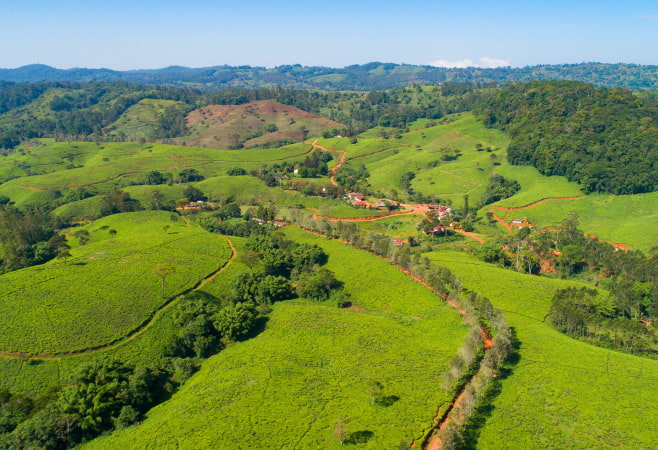
The Usambara Mountains offer a unique blend of natural beauty, cultural heritage, and breathtaking landscapes
- Where is Usambara Mountains located in Tanzania?
- How high are the Usambara Mountains?
- Best time to visit Usambara Mountains
- How to get to Usambara Mountains?
- What to do in Usambara Mountains?
- Where to stay in Usambara Mountains?
- Essential Tips for Your First Trip to the Usambara Mountains
- Conclusion
Where is Usambara Mountains located in Tanzania?
The Usambara Mountains are located in the northeastern part of Tanzania, within the Tanga Region, close to the border with Kenya. These mountains are associated with the Eastern Arc Mountain range, commonly referred to as the Galapagos of Africa by way of their distinctive flora and fauna, as a result of their fertile green vegetation, cool climate and abundant biodiversity.
The Usambara Mountains are located in northeastern Tanzania’s Tanga Region, making them easily accessible from coastal cities like Tanga and moderately reachable from Moshi or Arusha via the Mombo junction. They have picturesque scenery, cultural villages, and hiking paths, which provide a pure eco-tourism experience.
How high are the Usambara Mountains?
The highest peak in the Usambara Mountains, Chambolo, rises to about 2,289 meters (7,513 feet) above sea level in the West Usambara range. Nearby ranges like the Nguu Mountains are slightly lower in elevation.
They are divided into two main ranges:
- West Usambara Mountains - the hub of which is Lushoto with its dramatic cliffs, cool climate and spectacular view points such as Irente.
- East Usambara Mountains- located nearer to Tanga and Amani Nature Reserve, with their lush rainforests and great biodiversity.
Although not as high as Mount Kilimanjaro or Mount Meru, the Usambaras are renowned for their distinctive landscapes, beautiful valleys, and lower temperatures than the rest of the lowland areas. This boosts their suitability for hiking, cultural tourism and eco-travel experiences.
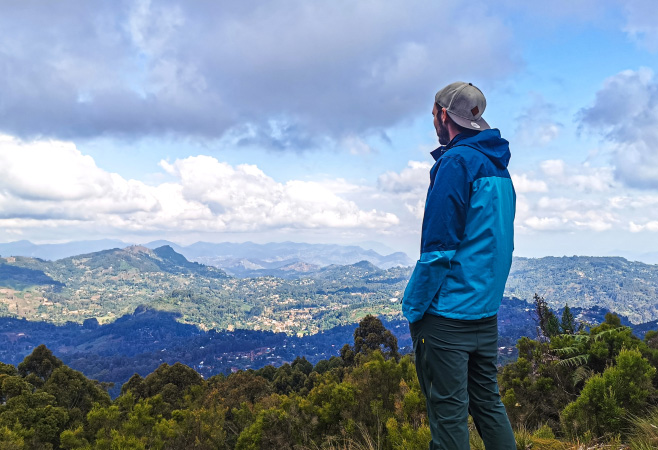
Visiting the Usambara Mountains offers a multitude of reasons that appeal to nature lovers and adventure seekers
Best time to visit Usambara Mountains
Every visit to the Usambara Mountains in Tanzania is more or less a timing factor depends largely on timing and the type of experience you are seeking
The ideal times are the dry seasons, between June and October and between January and February. The weather is favorable during this period, with little to no heavy rainfall to disrupt outdoor activities since everything is clear and a good time to go out and hike and see the beautiful scenery of the land. The trails are more convenient, and you will have the panoramic view of the sweeping views, rolling hills, villages, and fertile valleys.
The rainy seasons that are experienced during the months of March to May and November to December have heavy rains and therefore some of the trails often turn muddy and tougher to navigate to go through. These months, however, also show the mountains at their greenest and much alive with the blossom of flowers and with the growing plants. This can be still a rewarding season to the traveler who prefers fewer crowds and a more peaceful ambiance, although the essential equipment includes proper rainwear
To summarize, if you are focused on comfortable trekking and beautiful views, it is better to go during the dry season. However, during the wet season, if you enjoy lush green landscapes and don’t mind occasional rain, the Usambara Mountains present a special and invigorating view.
How to get to Usambara Mountains?
The Usambara Mountains are a green and cool highland area, known for hiking, birdwatching, and cultural tourism. Depending on where you are starting from, the following are the most significant ways to get there:
From Dar es Salaam to Usambara Mountains
The majority of the travellers start their trip at Dar es Salaam, the largest city in Tanzania and home to the country’s main international airport. Dar es Salaam offers a number of transport modes to get to the town of Lushoto where most trips to the Usambara Mountains begin.
- By Bus: There are direct buses which run between Dar es Salaam and Lushoto. The trip lasts approximately 7-9 hours according to the state of the roads and traffic. Although it is the cheapest alternative, it may be exhausting and therefore settle on a well established bus company where safety and comfort are assured.
- By Car: It is more costly to hire a personal car or taxi but it is flexible. The road between Dar es Salaam and Lushoto takes approximately 6-7 hours, and you can have a chance to make a stop at the beautiful sightseeing spots or the local markets.
From Arusha or Moshi to Usambara Mountains
If you are traveling in northern Tanzania, for example in Arusha or Moshi (usually the main safari or Kilimanjaro climbing centers) it is easy to get to the Usambara Mountains.
- By Bus: Buses regularly operate between Arusha or Moshi and Mombo, a small town on the main highway. A taxi, minibus (dala-dalas) or motorcycle taxi (boda-boda) can be taken up to the final ascent to Lushoto starting at Mombo. It is a great experience that lasts 1-2 hours and the winding roads have astounding secrets.
- By Car: You can rent a car in either Arusha or Moshi to tour at your own pace. Depending on the starting point, the drive would take approximately 4-6 hours. Generally the roads are good with the climb to Lushoto being steep and winding
From Tanga to Usambara Mountains (Lushoto)
By Bus/Shared Taxi
- Tanga city Minibuses (dala-dalas) or shared taxis run between Tanga city and Mombo, a small town on the main highway (A14) that links to Lushoto.
- The journey between Tanga and Mombo can be estimated to last 2-2.5 hours, based on the condition of the roads.
- On reaching Mombo, you will find frequent minibuses, shared taxi or even small buses up the hill to Lushoto, the gateway town to the Usambara Mountains
- The Mombo–Lushoto leg takes about 1 -1.5 hours along a winding mountain road.
By Train
While Tanzania’s TAZARA railway runs southwest toward Zambia, travelers heading to the Usambara Mountains can instead take a regional train on the northern line that stops near Mombo, though schedules can be infrequent.
Domestic Flights
No direct airport exists in Lushoto but you can take a domestic flight from Dar es Salaam to Tanga Airport (TGT). From Tanga, it’s about a 4–5 hour drive to Lushoto, the main gateway to the Usambara Mountains.. This alternative is time saving but normally expensive.
Final Tips
- Booking in advance: Buses to Lushoto and accommodations can fill up quickly, so it’s best to book in advance
- Get Ready for the Roads: The road between Mombo and Lushoto is curvy hence motion sickness pills might come in handy provided one is sensitive.
- Experience the Journey: The road leading to the Usambara Mountains is picturesque with the sight of the rural villages, farms and mountainous scenery.
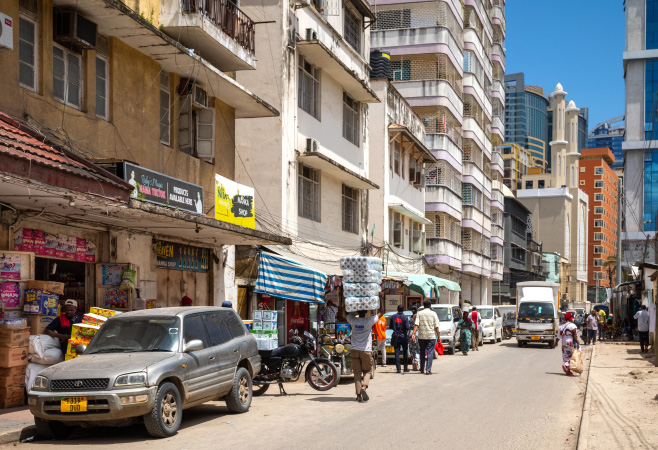
The Usambara Mountains are easily accessible by road from major cities in Tanzania
What to do in Usambara Mountains?
The Usambara Mountains of northeastern Tanzania are a haven for nature lovers, adventurers, and culture enthusiasts. These mountains are a cool respite from the usual safari destinations with their fertile green hills, dramatic cliffs, and quaint villages. In the event that you are planning to visit the Usambara Mountains, here are some of the top things to do in Usambara Mountains to make your visit worth remembering.
1. Hiking Adventures
One of the top things to do in Tanzania is hiking the Usambara Mountains. Trails range from short day hikes to multi-day treks, which are spectacular and show views of countryside, forests as well as valleys. The Magamba Rainforest hike is a good place to spot black-and-white colobus monkeys, and the Irente Viewpoint hike will reward the visitors with a panoramic view of the Maasai plains. Guided tours also allow visitors to learn about local plants, medicinal herbs, and the history of this area.

The Lushoto to Mambo or Mtae hiking route is one of the most scenic and culturally rich treks in the Usambara Mountains
2. Visit Irente Viewpoint and Farm
One of the most popular places to visit in Lushoto is Irente Viewpoint. It is a precipice on which you can look over rolling hills and farmland which stretch into the distance. The Irente Farm, located close by, sells homemade cheese, bread, and jam, and it is the right place to have lunch after a hike.
3. Explore Magamba Rainforest
This dense forest is rich in biodiversity and history. During a guided walk, you may encounter rare chameleons, birds, and monkeys. The forest also has German colonial caves from World War I, adding a historical element to the natural beauty.
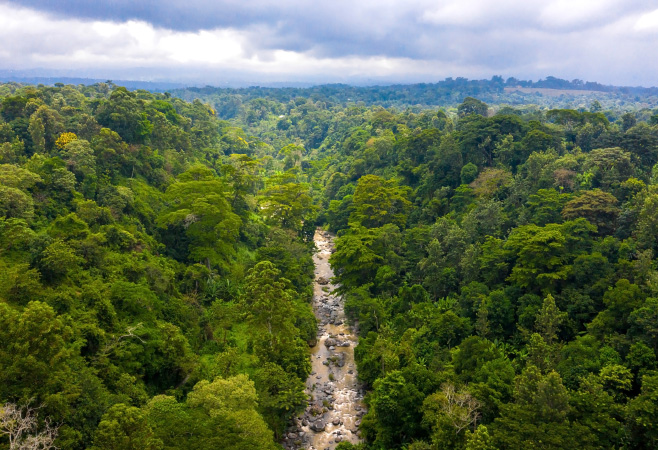
Cool rainforest climate and a spectacular view over the plain
4. Discover Local Culture
A visit to the Usambara Mountains is not only about nature. A tour of the local villages will provide an understanding of the traditional life of the Tanzanians. You get to observe how people farm, cook, make crafts in a manner that has been passed on over a long time. Most community-based tourism initiatives enable meaningful interaction between locals and visitors and help in sustainable development.
5. Mkuku Waterfalls
Mkuzu Waterfalls (sometimes spelled Mkuzi) is a serene getaway for nature lovers, nestled deep in the Usambara Mountains. The cool flowing waters are the best place to cool off and rest after a hard day trekking along meandering ways and through thick trees and shrubs. The falls are enclosed with beautiful vegetation that provides a serene environment where a tourist can have a relaxing picnic, snap a few photographs or just sit and rest and listen to the relaxing sounds of nature.
The road that heads to the falls will usually pass by small villages, which will give you a glimpse of the life of the locals in the process. Mkuzu Waterfalls are quite popular among both locals and tourists and is not just a scenic place but also it is a refreshing experience and goes hand in hand with the fun of visiting the Usambara mountains.
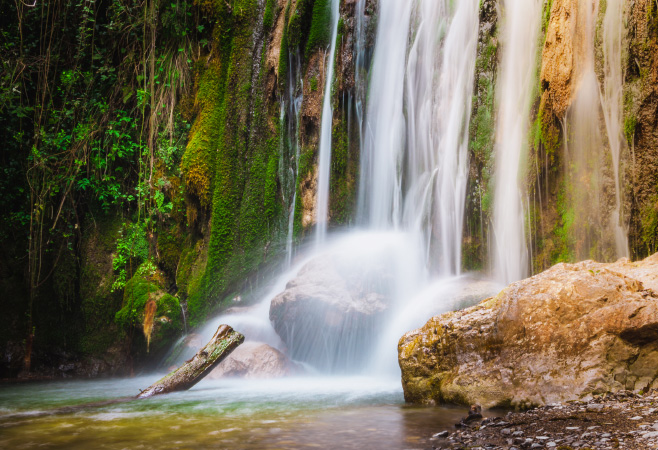
The Mkuzu Waterfalls offer a serene escape into nature, with lush greenery, cascading
6. Birdwatching
The Usambara Mountains are a birdwatcher’s paradise, a place where a visitor gets an opportunity to see some species which are not found anywhere in the world. Having a wide range of habitats, with both montane forests and open farmland, the area has an astonishing selection of birds, with such colorful species as Usambara weaver, active greenbuls, and graceful trogons.
There are guided birding tours that are offered to the people who desire the assistance of an expert in locating rare and endemic species. Birdwatching is also one of the most interesting activities in the Usambaras because you can have a calm and rewarding experience through a pair of binoculars in hand.
7. Relax in Lushoto Town
Lushoto is the central gateway to the Usambara Mountains and a lovely mixture of culture and history. The town is very relaxed and it is the ideal location to relax before or after going through the available trails. Tourists are able to walk around the vibrant local markets, taste the local fruits or have a cup of coffee at one of the small cafés. The Tanzanian experience is genuine and the colonial-era buildings make the streets look good as well. Lushoto is not a stopover but a destination on its own as its beauty is captivating.
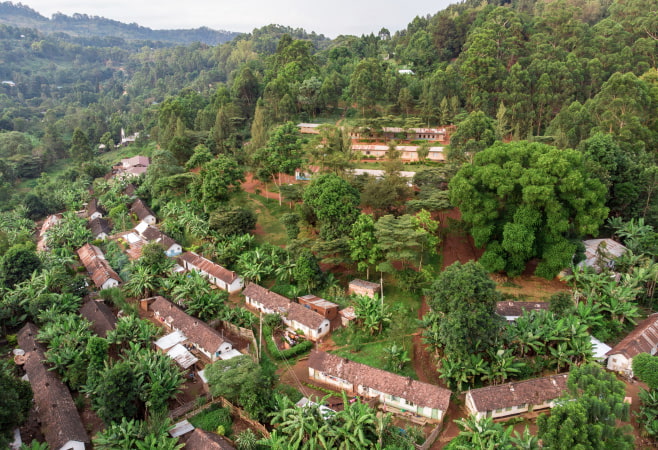
The Lushoto area offers so many places of interest for tourists, ranging from natural beauty as forest and waterfalls to view point and historic place
8. Rock Climbing in the Usambara Mountains
Although not a major rock-climbing destination, the Usambara Mountains offer several spots near Lushoto and Mtae where visitors can enjoy light scrambling or short climbs on smaller cliffs, often combined with scenic hikes.
There are also guided climbing tours, which are frequently booked by local community-based tourism organizations and these are safe and help in boosting the local economy. And the cool mountain climate makes climbing a pleasure all year round and the surrounding landscape of forests and villages is also a cultural enhancement to the adventure. Rock climbing is a great complement to hiking and trekking for outdoor enthusiasts.
Where to stay in Usambara Mountains?
The choice of accommodation is vast in the area, lwhether you are an adventurer seeking hiking paths, a couple looking for a romantic getaway, or a budget traveler seeking affordable comfort, the area provides a great variety of choices. Here are some of the best places to stay in the Usambara Mountains.
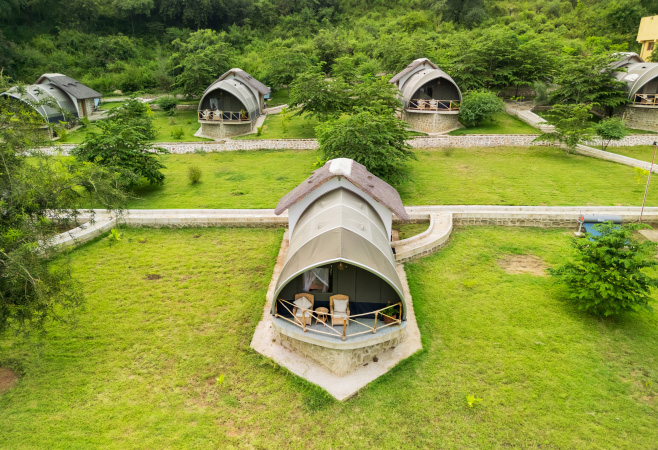
Lushoto offers a wide range of accommodation, from camping grounds to mid-range hotels and tourists, from ground camping to mid-range hotels
1. Eco-Lodges and Nature Retreats
Eco-lodges are mostly preferred by tourists who intend to enjoy nature and at the same time promote sustainable tourism. Most of these lodges are constructed using local materials and have breathtaking sights of valleys, forests, and farms. Others offer guided hikes, cultural tours and farm-to-table meals made using organic produce. Not only do you get comfort when you stay at an eco-lodge, but it also helps in preserving the environment and supporting the local communities.
2. Guesthouses in Lushoto
The major entry point of the Usambara Mountains is Lushoto, which also boasts a number of guesthouses, both cheap and moderate. The guesthouses are best suited to people who desire to be near the local market, transport modes and even cultural sites. The majority of them offer minimal yet hygienic rooms, healthy home cuisine, and good hospitality. Traveling to Lushoto is easy and affordable if you plan to go on day hikes or you are going around the local villages.
3. Mid-Range Hotels and Inns
Mid-range hotels and inns in the Usambara region are a good bet for those who would like to visit the region but are not yet ready to pay a lot of money. Their rooms are usually bigger, they have hot showers, and other services including Wi-Fi or small restaurants. These hotels serve the local business travelers and tourists and they can spend the night comfortably after trekking or sightseeing around.
4. Camping Options
Camping is a thrilling adventure experience that travelers have of the Usambara Mountains. Various allocated camp sites and environmentally friendly tourism initiatives enable tourists to camp in beautiful sceneries. Sleeping under the stars, waking to bird calls, and feeling close to nature are highlights of camping here. There are also guided camping trips which are safe and a better appreciation of the mountains.
Essential Tips for Your First Trip to the Usambara Mountains
Your first visit to the Usambara Mountains in northeastern Tanzania can be both exciting and overwhelming. The Usambaras are known to have rolling green hills, scenic viewpoints and friendly villages, which is a very different experience as compared to the popular safari parks of Tanzania. As a first-time visitor, to help you make the most of your adventure, here are some of the tips useful as a first-time visitor.

This guide is here to help you fully embrace your mountain adventure
1. Pack for the Weather
It may be exciting and somewhat overwhelming to plan your first trip to the Usambara Mountains, northeast of Tanzania. Evenings and early mornings might be cold particularly in elevated places such as Lushoto or Mtae. Carry a combination of light clothing during the daytime and warmer clothes during the nights. A rain jacket is also needed because it can always rain anytime.
2. Wear Comfortable Footwear
Walking or trekking is the main activity and therefore, strong hiking shoes are required. Trails may be steep, muddy or rocky and a proper pair of shoes will make your hikes much more entertaining.
3. Hire a Local Guide
The best way of exploring the region is through guided walks. Local guides are aware of the existing hidden paths, viewpoints or cultural sites that you would not have known. You benefit when you hire them as it not only enriches your experience but helps in community based tourism initiatives.
4. Stay Hydrated and Carry Snacks
During a hiking trip, you should bring a reusable water bottle and snacks. Hiking trails may be over a long distance, and the experience will be made easier with a boost of energy.
5. Respect Local Culture
Sambaa and other ethnic groups reside in the Usambara Mountain range. In the villages, greet people, ask permission before taking photos, and observe cultural practices. This respect generates friendly relations and pleasant experiences.
6. Choose Your Base Wisely
The major point of entry is Lushoto where there is a large selection of guesthouses, and Mtae can be viewed from the cliffs. Choose where to live depending on whether you want to live in a bustling town full of facilities or a small village in the forest.
7. Be prepared for limited connectivity.
There is weak internet and mobile coverage in certain remote locations, so it’s wise to preplan with family and friends—and also enjoy the chance to disconnect from digital distractions. However, areas such as Lushoto and much of the West Usambara now have relatively stable 3G/4G networks, though connections may weaken or disappear once you go deep into the forests
8. Prepare Your Travel Documents
Prior to departure, ensure that your travel documents are in place. The majority of tourists visiting Tanzania require a valid passport with at least six months’ validity and a tourist visa (applicable online or on arrival). Bring printed copies of your hotel reservations, travel insurance and flight home details because they might be demanded by the border control. It is a clever idea to have digital copies of important documents as well as paper copies.
Conclusion
In conclusion, the Usambara Mountains are a secret gem of Tanzania that can provide the tourist with a rare combination of the beauty of nature, cultural experiences and wilderness. Whether it is hiking with green forests and finding spectacular viewpoints, exploring traditional villages and enjoying rest in a beautiful town like Lushoto, each episode of this area can be called genuine and richly rewarding. The Usambara Mountains travel guide will point out the basics that you must put in place to ensure that you have an excellent trip, be it to trek, stay in eco-friendly hotels or to have a meaningful experience with the locals.
Few tourists have visited the Usambaras and as such, the Usambaras offer a rejuvenating experience into cooler temperatures and relaxing sceneries that many people have never had the opportunity to see before. Traveling in the Usambaras can be a hassle-free and satisfying experience, and with the right preparation—travel documents, proper equipment, and cultural sensitivity—it will be a rewarding experience. Going to the Usambara Mountains is not all about sightseeing, but it is all about slowing down, interacting with nature and having a different experience of Tanzania.
Related Articles
- A Complete Guide to Shopping in Zanzibar: What to Buy and Where to Find It
- The Ultimate List of the Best Restaurants in Nungwi for Fresh Seafood and Ocean Views
- The Ultimate Singida Travel Guide: Planning Your Trip to Central Tanzania
- Beyond Parliament: Discover the 13 Best Restaurants in Dodoma Serving Amazing Food
- Into the Wild West: A Comprehensive Traveler's Guide to Katavi National Park
- The Ultimate Guide to Kendwa Beach, Zanzibar : Planning Your Dream Getaway
- From City to Sanctuary: Discover the Wonders of Pugu Hills Forest Reserve on a Day Trip
- Making Your Stay Memorable: The 15 Best Hotels in Mwanza for a Perfect Vacation











